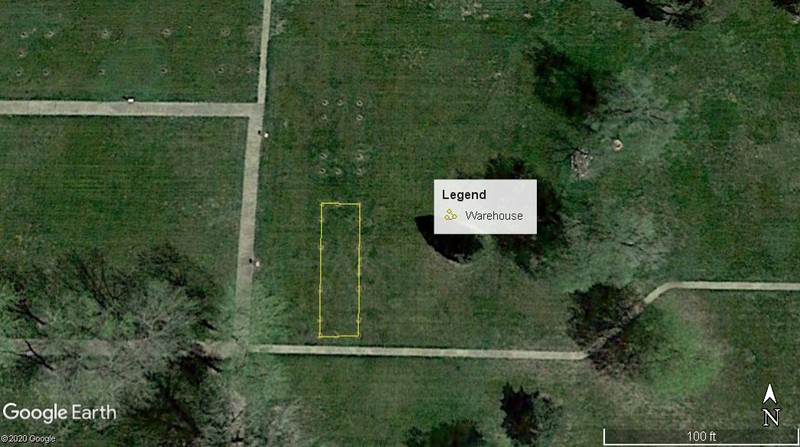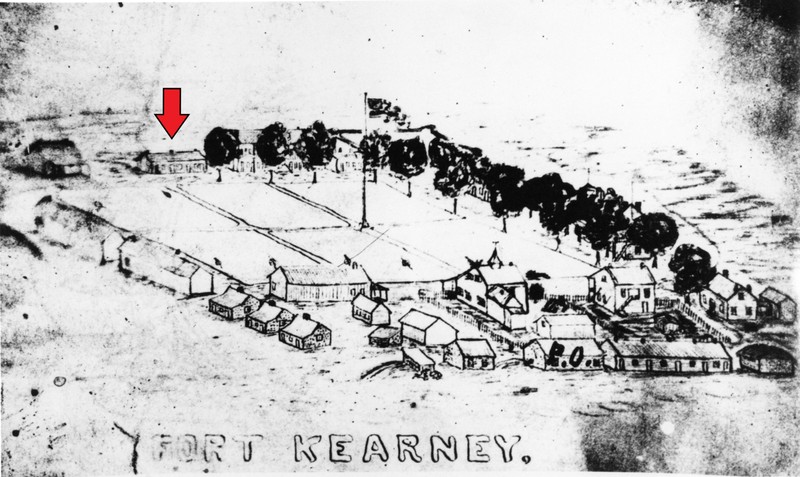Fort Kearny Soldiers Quarters and Warehouse #9
Introduction
Text-to-speech Audio
Images
Aerial photo of Soldiers Quarters outline

Drawing of Fort Kearny with arrow showing location of Soldiers Quarters

Backstory and Context
Text-to-speech Audio
The daily life of the men at Fort Kearny was similar to that at other frontier posts. At its best, it was an isolated place and brief furloughs broke the monotony of an otherwise uneventful life. Frontier post-construction work had to be done by the troops. No civilians were available, and no funds were allowed for their employment if they were. Soldiers at Fort Kearny built all of the first buildings, including the soldiers' quarters, as no civilians were employed for several years.
The Missouri Volunteers, who first garrisoned Fort Kearny, had been enlisted for service in the Mexican War. Instead of being sent to the front, they were assigned to establish the new military posts on the route to Oregon. They were unhappy with these new orders and before they had left Fort Kearny on the Missouri, several had deserted. Their skills as mechanics and artisans were not highly regarded by the engineer in charge. He complained that they could not get the work done in a reasonable time. While he had four hundred and fifty men to use he did not believe he could accomplish much, since "it is particularly hard to obtain work from mounted troops....their horses require much of their time and care."
Immediately upon arriving at Fort Kearny on the Platte, Lieutenant Woodbury put the men to work building adobe structures and wood frame barracks. The work of these men became less every day. They had enlisted as soldiers, not as laborers. Other means were used to encourage men to work on tasks not strictly military. The warehouse at Fort Keany held a quantity of whiskey in storage. In 1864, when Fort Cottonwood was being built, Captain Nicholas J. O'Brien sent an officer to Fort Kearny to get a supply of whiskey for rations. The officer took seven barrels of corn whiskey back to Fort Cottonwood. Builders and other workers were given a gill of whiskey in the morning and another at night, provided they didn't shirk their work. The result was that the men all seemed inspired, all wanted to work, and worked well. This tactic was also used at Fort Kearny until July 1865, when the War Department ordered the whiskey rations discontinued.
Sources
Roger T Grange Jr, “Digging at Fort Kearny,” Nebraska History 44 (1963): 101-121
Mantor, Lyle E. "The History of Fort Kearny." Ph.D. diss., 1938.
Post Inspection, Fort Kearny, N.T. June 28, 1864.
Letters from Woodbury to Totten, December 9, 1847, and August 2, 1848.
Ware, Eugene F., The Indian War of 1864. University of Nebraska Press, Lincoln, 1994.
Post Returns, Fort Kearny, July 1865.
